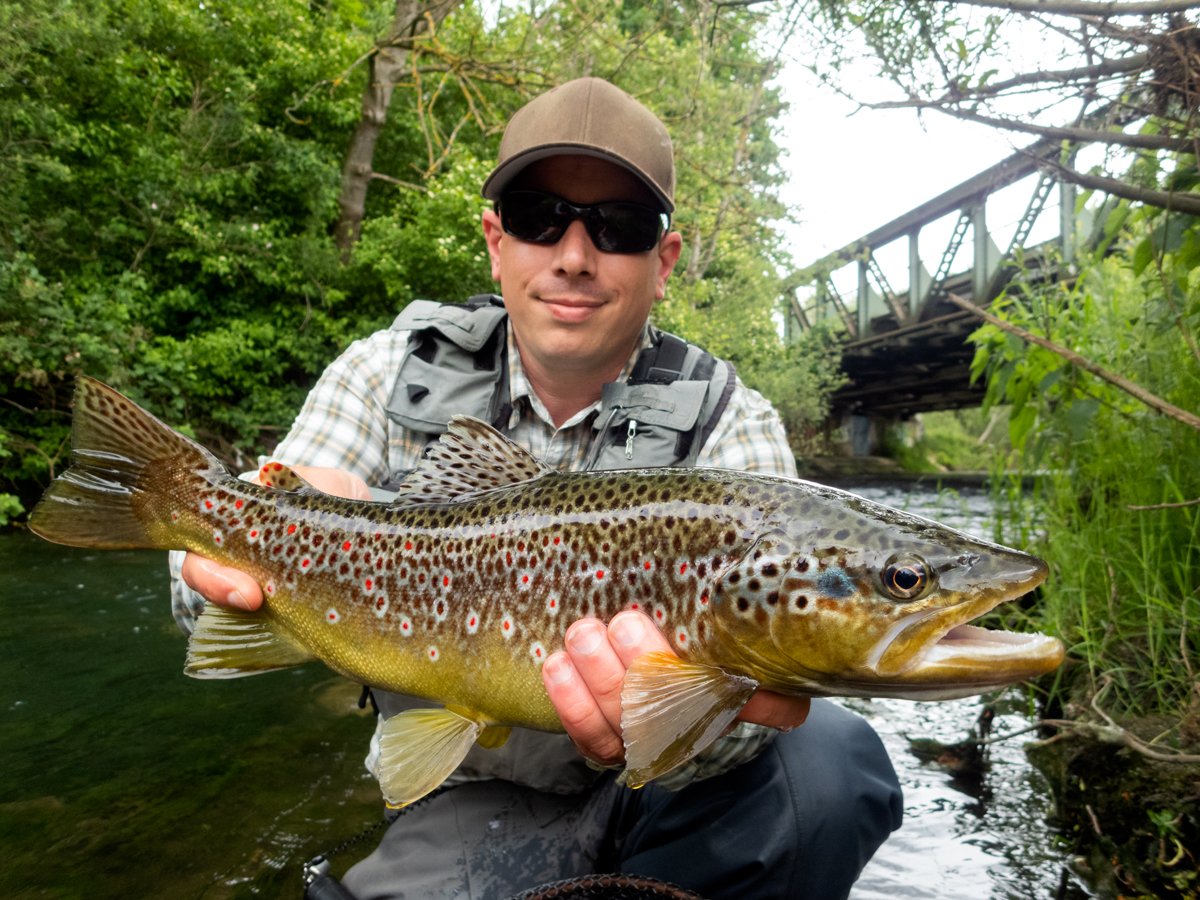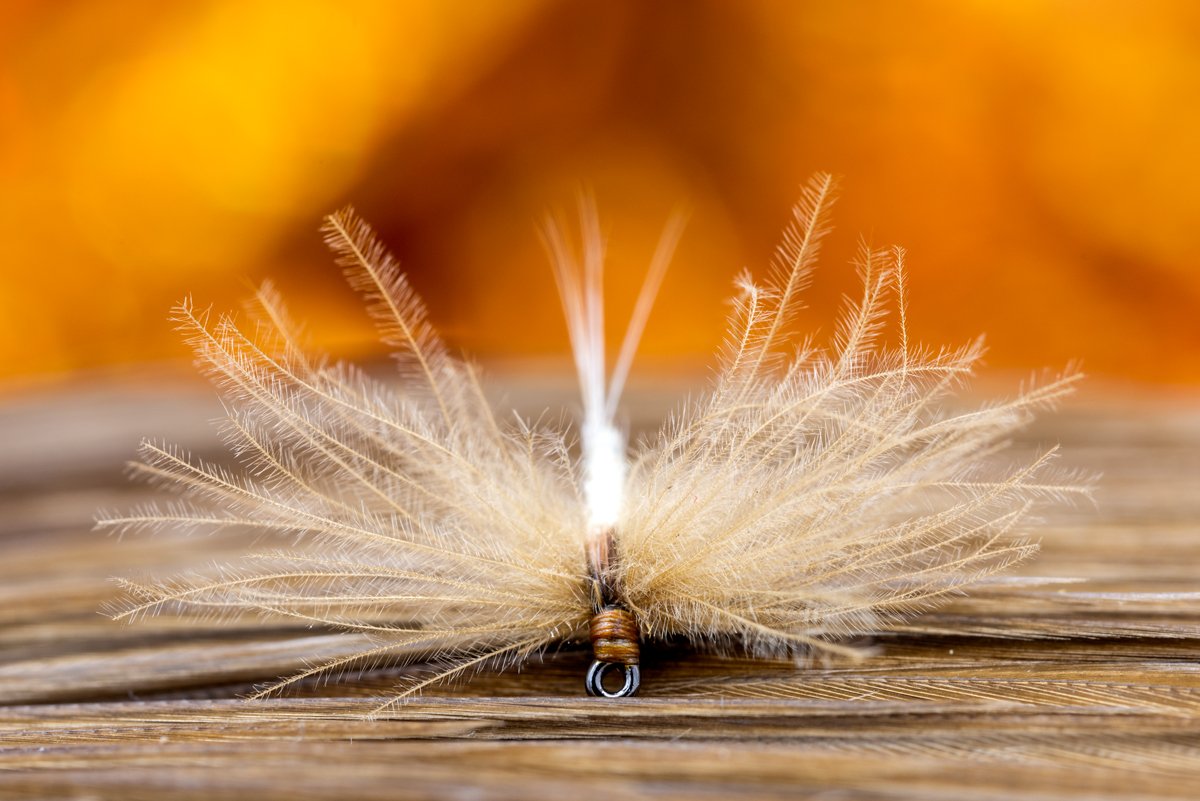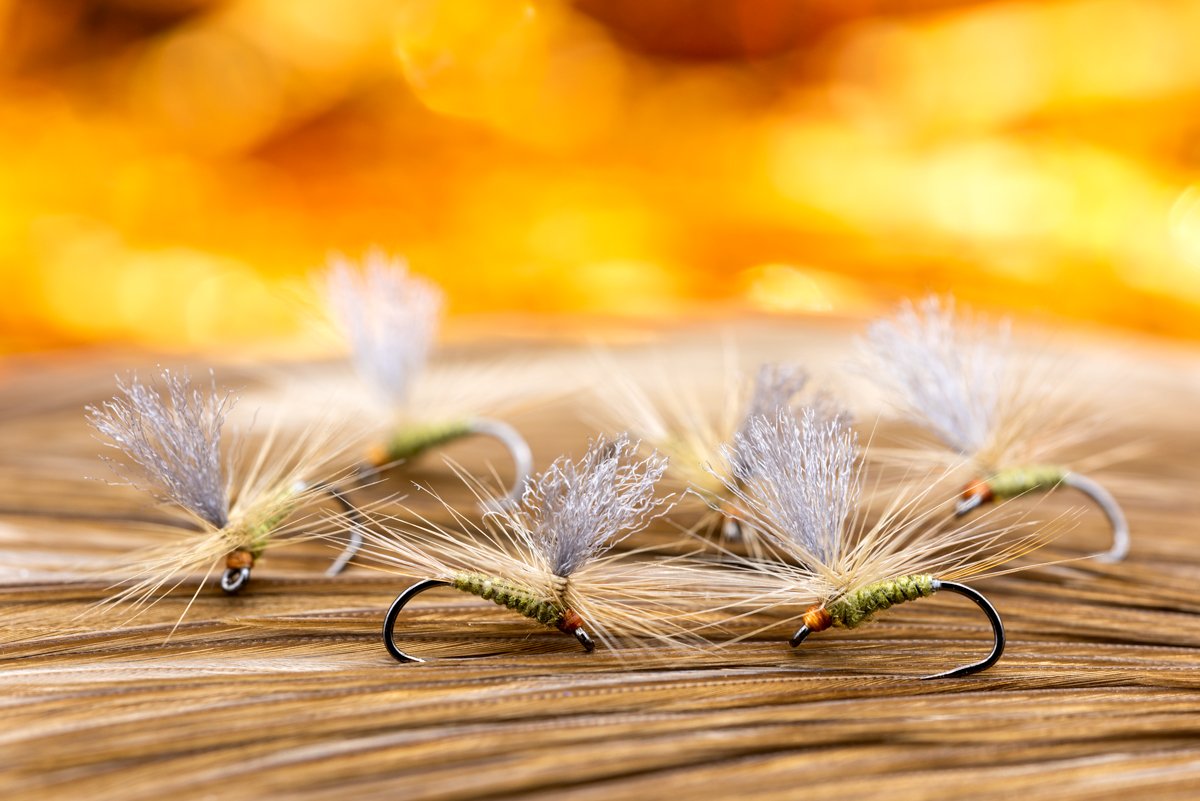
Harald Bayler
1. Choice of equipment Rods, reels, fly lines, fly floatants, clothes, glasses, and other useful items.
I generally prefer soft fly rods for trout and grayling fishing. Line class #4 is my personal favourite. In larger waters I prefer to use my Greys GR70 Streamflex in class #4 with 10 feet. In smaller waters I prefer shorter rods up to 8.6 feet in class #3 - #4.
When it comes to fly lines, for me the classic DT is still one of the most versatile lines for fishing with nymphs, wet & dry flies. The DT from Mastery is my personal favourite.
A good reel with a finely adjustable brake is extremely important for bigger fish. Here I prefer large arbor reels. Hardy reels are some of the best and most reliable reels on the market.
When nymph fishing, I love fishing in the death drift. I also like to use a bite indicator made of synthetic fibres to be able to detect careful bites. For this I tie synthetic fibres into monofilament. These bite indicators are easy to cast and can also be pulled through the rod rings when fishing with longer leaders.
Good glasses are extremely important. As I wear glasses, I had polarised glasses made for me many years ago. I can only recommend this to anyone who wears glasses. I am more than satisfied with my Zeiss lenses.
One of my most important items in the waistcoat is a small sponge with a little rinsing agent. I use it to degrease my leader regularly. This makes nymphs sink faster and the leader doesn't stand out on the water surface when fishing with a dry fly. A small gadget with a big effect.
2. Leader material, build-up, length and knots.
When it comes to the leader, I have to say that I have been tying my own leaders for many years. The advantage is that you can adapt your leader to the conditions on the water.
My leader: 50cm 0,30mm (Grand Max Riverge) 60cm 0,21mm (Grand Max Riverge) Leader ring 100cm to 200cm tip.
To ensure a good power transmission during the cast I use Flurocarbon from Grand Max (Riverge) for the first two parts of my leader. This leader material is very stiff and transports the fly perfectly.
I use the surgeon's knot to connect the lines.
To attach the tip I use a leader ring. The tip of the leader can then be flexibly adjusted.
3. Approach and stealth.
When it comes to successful fishing, it is very important to approach a fish carefully. Only when the fish is not disturbed by us does it gather food and behave naturally. For this reason it is important to be smart.
If possible, I only move along the shore of a body of water. Nothing is worse than running between the fish!!! A good position and a well-aimed cast where the fish is not thrown over with the flying line brings success.
If you keep a little distance from the fish and cast carefully and deliberately, you often have the best chance of success.
4. Reading the water.
A fly fisherman who can read the water will also be successful. Unfortunately, many fly fishers do not take the time to observe and pass by many fish. Deep pools, obstacles such as stones and logs, overhanging bushes and slight depressions in the water are interesting locations. Here you should always take some time and observe the suspicious spots. Often you only recognise the fish at second glance.
5. Casting ability which casts are essential.
A good fly fisherman can cast but a good caster is far from being able to fish. This motto corresponds to the fact. A fly only catches when it is in the water and naturally offered. Accordingly, casts that bring my fly to the fish quickly and effectively are important to me. The classic roll cast and the switch cast are the means to an end on many waters that are heavily overgrown. With the dry fly, the parachute cast is the most important cast of all for me. Only when the fly drifts freely does it catch.
If you master the roll cast and the parachute cast and understand that the presentation of the fly is important, you can fish anywhere and you will be successful.
6. Entomology, what should we know.
I spend a lot of time on the water and have been photographing insects on and in the water for many years. A fly fisherman does not have to be a studied entomologist. But it is important to know what the feeding animals look like in and around the water. You should also familiarise yourself with the insects' way of life. Only then can you understand what is happening in the water and interpret the feeding behaviour of fish.
Again, observation is the best way to learn.
7. Rise forms Can they tell us something?
Especially when fishing with a dry fly it is important to recognise where the fish is preying. Often it is rising insects that attract the fish to the water surface.
If fish pick up rising insects, it is advisable to use dry flies that lie deep in the water. It is easy to see if a fish is picking up rising insects. Watch the fish and wait until it eats. If there is an insect on the water, it is clear that it is collecting food from the surface. If there is no insect and the fish breaks the surface, it is collecting food just below the surface.
Even the slow rise of a nymph can now lure the fish out of its reserve.
8. Fly selection, Size, shape, materials, which flies are essential.
When it comes to flies, I have a weakness for functional fly patterns. A good fly is easy to tie, catches fish and is good to use.
For dry flies, I prefer parachutes and classic hackle flies. These patterns are ideal for imitating mayflies.
Deer hair caddis are the perfect all-rounders for caddis & smaller stoneflies. I like to use CDC flies for rising flies.
For my nymphs I like to use classic flies like the Hare's Ear or the Pheasant Tail. But also patterns made of synthetic dubbing and with a CDC hackle are among my favourites.
I like to work with Semperfli materials.
Semperfli has a wide product range with fantastic materials. I can give a clear recommendation here.
I especially appreciate the large selection of dubbing, tinsel and binding threads. If you are looking for a stable thread, you should go for the Semperfli Nano Silk. For tying nymphs and dry flies I recommend the strength 12/0 (50D).
I trust Ahrex when it comes to hooks. Ahrex hooks are extremely sharp and stable. In addition, there are many models offered by Ahrex. There is the perfect hook for every fly.
I always base the size of my flies on the food in the water. The most common sizes for me over the year are flies in the size 14 - 16. In late autumn and winter I fish a lot with small flies in the size 18 - 20.
9. Presentation and drifts.
The key to success is an effective mending of the flyline. The goal must always be a natural drift. The stretched laying down of the fly line is usually not the ideal solution! Those who lay down their fly loosely often catch more fish.
The most important thing is to get a feeling for the line. Only if you control the drift of the fly and minimise the negative influences by laying it down, the fly will reach the fish naturally.
10. Upstream or downstream?
It is hard to say which way to the fish is the right one. Every water and every spot on the river is a new challenge. As a fly fisherman you always have to try to find the best way to the fish.
If possible, I prefer fishing downstream with the dry fly and upstream with the nymph.
But in the end you always have to take it as it comes and adapt to the situation on the spot.
11. Fighting fish.
When it comes to the drill, I can only advise everyone to apply pressure. A too gentle drill without pressure often leads to the loss of the fish, especially with larger fish.
A short and intensive drill protects the material and is also good for the fish. Drilling until the fish is completely exhausted must be avoided.
For this to succeed, an appropriate leader is crucial. If the leader is strong enough, you can shorten the drill considerably and the fish will also benefit from this.
You also have to steer the fish. A sideways and shallow pull with the rod will steer even strong fish. And the most important thing is to always stay with the fish! Those who stand still usually lose.










